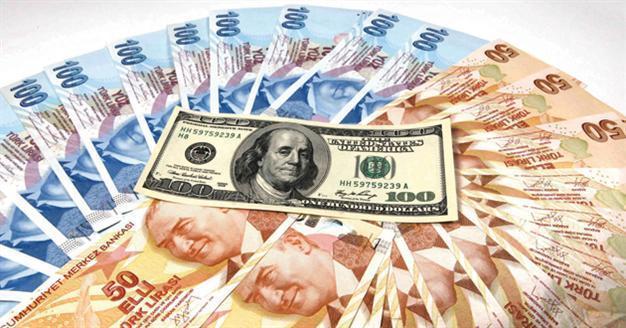Turkey unlikely to see cash flow on rate cuts in South Korea, Brazil
ISTANBUL

The Turkish Lira, one of the worst-performing currencies of last year, may gain over foreign currency inflows to the country.
It is unlikely that recent interest rate cuts by the central banks of the European Union, South Korea and Brazil will trigger hot money inflows to Turkey, Seyfettin Gürsel, a prominent Turkish economist, has said.“The Turkish Lira basket has already started to increase in value. It seems like hot money inflows have started before. It is hard to predict if short-term money inflows will increase the vulnerability of the Turkish economy [to external shocks]. But it may happen when the credit rating of the Turkish economy is upgraded,” he told the Hürriyet Daily News yesterday in a phone interview.
A rating increase would be more determinative of an increase in hot money inflows to Turkey than recent monetary policy rate cuts around the world, he said.
Central banks around the world have recently cut interest rates to stave off a recession.
South Korea’s central bank lowered its key interest rate yesterday by a quarter of a percentage point to 3 percent. The European Central Bank (ECB) cut its key interest rate by a quarter percentage point to a record low of 0.75 percent July 5 in an effort to give a further boost to the deteriorating European economy, while China, the second largest economy in the world, cut its key lending rate the same day to 6 percent to prevent a further slump in manufacturing and a collapse in property values. Latin American economic powerhouse Brazil’s Central Bank on July 11 cut its base interest rate by 50 basis points to a record-low 8 percent to stimulate growth.
These developments have increased the possibility of the Turkish Central Bank reducing the interest rate, according to Gürsel.
“The Central Bank does not employ the policy rate anymore, which is at 5.75 percent. The bank may lower the upper limit of the interest rate or signal to do so,” he said.
The Central Bank has applied an unusual interest rate policy since late 2010, a low policy rate and an active interest rate corridor – the gap between its overnight borrowing and lending rates. The lower end of the interest corridor is at 5 percent, while the upper limit is 11.5 percent. The policy rate is at 5.75 percent.
Gürsel said he expects the Central Bank to ease the monetary policy using various policy instruments in the upcoming months to support the credit volume if the economy slows down in the second quarter.
The policy rate cuts are unlikely to accelerate short-term money inflows to Turkey, a source from a state-run bank told the Daily News yesterday, echoing Gürsel. The lira may increase in value if risk appetite, particularly in the United States, does not deteriorate, the source added.
The lira may increase in value against the U.S. dollar, if the Federal Reserve embarks on a third round of quantitative easing, which may happen in September, the source added.
Growth concerns particularly in developed countries have started to increase, which affects developing countries in a delayed manner, the source said, adding that there are early signs for a recession in 2013.
Servet Yeşilyurt from Istanbul contributed to this report.
Istanbul bourse provides most returns
ANKARA - Anatolia News Agency
On a CPI and PPI adjusted bases, the dollar on a three-month basis, the IMKB 100 Index on a six-month basis, and gold on a one-year basis, brought investors the most real returns, while the euro was the vehicle that strapped investors with the most losses.
On a PPI adjusted basis, gold brought investors 3.17 percent real returns, the dollar brought in 2.26 percent real returns, deposit on money kept in the bank brought in 2.02 percent and the euro only brought in 0.20 percent real returns.
















